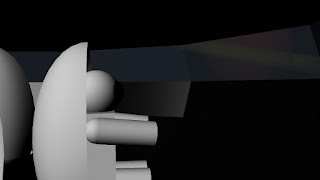Choose a character from one of the provided rigs, or acquire a rigged model of your own (so long as it doesn't already come animated). Use it to create a short character animation to a line of dialogue.
The camera can be focused on a bust shot (waist up) of the character. Animating anything that's not showing on camera is not required, but make sure to animate everything that we do see on camera. Avoid just a talking head shot - involve the character's body in the animation.
What I will be looking for during the final grade:
Lip Syncing: Do the mouth movements match the dialogue?
Head and Body Accents: Do the character's actions accent the dialogue?
Acting: Does the character show personality? Does the character feel alive?
Technical: Are there any hiccups in the animation? Is the rig being utilized to its fullest potential? Are there any technical issues such as the model's body parts intersection each other (such as the hand going into the body)?
Student Examples




































